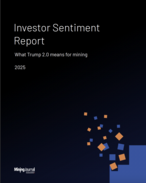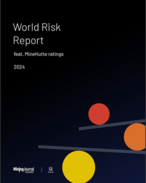Consolidation is easy to justify on the grounds of operational synergies, rationalisation of overheads and other economies of scale. Examples that affect this region include Rio Tinto and North, BHP and Billiton, and the Anglo group's increasing spread.
However, looking more closely at how some of the post consolidation organisations are structured reveals a less operational emphasis. Rio Tinto units Hamersley Iron and North have maintained separate operational management groups and not (yet) taken the "one-mine" approach that has taken Hamersley so far. BHP Billiton has split the management of its coal assets between energy coal, and coking coal, the latter being combined with iron ore into its new "carbon steel" division.
Surely there are more similarities between mining the two types of coal, than with iron ore? Certainly, but the issue here is not mining, it is the desire to face the steel mill customers with a single and united front. This may be a genuine effort to become more customer-focused, but perhaps it is a response to the "divide and conquer" tactics the Asian steel mills have practiced so adeptly and blatantly in the past.
Whatever the interpretation, these developments herald a change from the traditional operational focus of mining companies, towards becoming more market-driven organisations. This will have significant implications for mining company management, and the analytical support they rely on.
Developments in analytical approaches/tools
Fortunately, developments in computing have made great progress for the planning and management of mining operations. As well as the ability to handle large amounts of information using databases, the mining industry has benefited from specific developments in modelling and optimisation mathematics, particularly applicable to a business involving large volumes, masses of data and great economic sensitivities.
All industries benefit from the ability to simulate their operations in computer models. Some industries benefit from software that goes on to optimise these models.
In an optimisation, the computer uses complex mathematics to control one or more of the variables in the model to maximise the simulated performance of the system. Furthermore, if the optimisation runs are short enough, it is feasible to iterate through possible values of other factors, quickly homing in on the combinations that give the best result. Even further, scenario analysis can provide great insight into the robustness and sensitivities of particular plans by a wide range of criteria, leading a path towards best plans as opposed to just mathematically optimal plans.
Mining optimisation technology is constantly developing in terms of what it can simulate, optimise, and therefore what can be considered through iteration.
For Example, using conventional methods it takes a mine planner weeks (or months) to develop a viable long-term schedule in a multi-pit, multi-product blended coal or iron ore scenario. In a single cycle, using Whittle Consulting's approach to multi-pit blending scheduling, the software may evaluate several million feasible life-of-mine schedules, discarding combinations of variables returning good results, homing in on and refining combinations giving good results, until it can find no more room for improvement.
Within a run, it is possible to optimise:
* The long-term schedule.
* The timing of major mine expansions.
* The percentage of material to washed/beneficiated.
* The "negotiation" of processing plant grades.
By iteration it is possible to evaluate:
* Alternative plant configurations/expansions.
* Different cost scenarios.
* Alternative product mix/specification.
* Various projected market environments.
In a complex blending situation the orebody is actually capable of producing a wide range of product volumes and mixes, each with its own combination of cost and commercial consequences and implications for the ultimate use and life of the resource. This has always been apparent at a conceptual level, but now it is possible to address these dimensions as a practical component and fundamental dimension of the planning process.
The level of discussion can now reach new levels. The developments in optimisation tools and techniques can provide the analytical foundation for a new paradigm in the scope, complexity and performance of the mine planning process.
Market driven strategic mine planning: management implications
However, it is not going to be that simple. Running some reports and performing some analysis, even if brilliant, does not mean that the organisation is instantly focused on the strategic agenda and works cohesively as a unit in the pursuit if its objectives. That involves people, not just computers, and people need managing.
To become market-driven, the departments of marketing and mining operations are going to have to learn to talk to each other better, and while they are at it they should learn to include finance, human resources and anyone else who is around. There are barriers to cross-functional dialogue, stemming not only from the different job descriptions, but also from the different education, mindsets, logic (or lack of), jargon, personalities and even appearances of these groups.
People tend towards the functions that suit them, and pointing out the stereotypes can be fun, and frightening!























